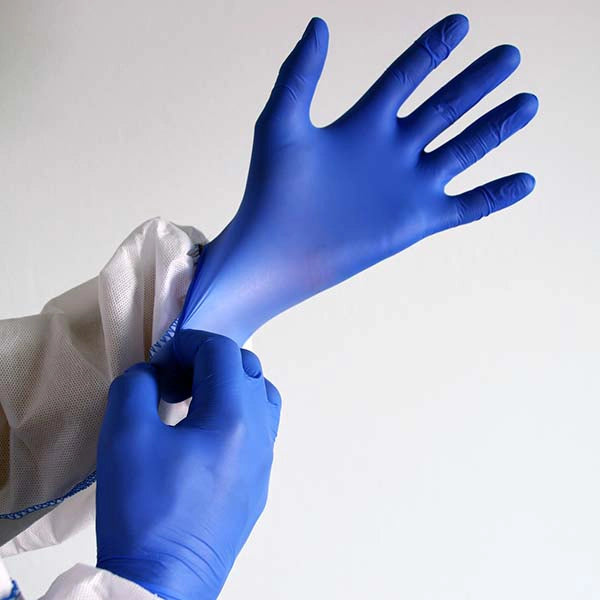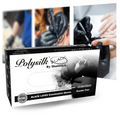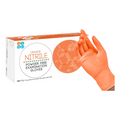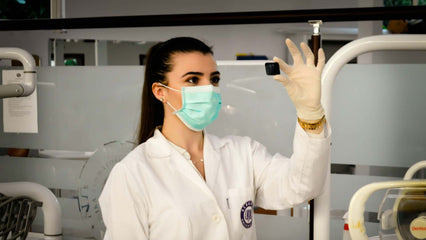If you’re in the healthcare industry, you know the importance of high-quality protective equipment like medical gloves. You want the best medical gloves for your staff.
Whether you’re purchasing for a hospital, running first aid classes, or stocking an exam room, you also know how expensive those gloves can get, especially given how quickly healthcare providers use them.
gloves.com has been a leader among medical glove suppliers for many years. We have a carefully curated selection of the highest-quality disposable gloves for the healthcare industry.
Below, you’ll find a detailed list of the top medical gloves and information about where to find them. These are the gloves we’ve come to trust, and we’ve included something for every need (and hand size).
How to Choose the Best Disposable Medical Gloves
Choosing suitable disposable medical gloves is critical in maintaining safety for healthcare professionals and patients.
The first thing to consider is the glove material, with latex, nitrile, and vinyl being the most popular options. Latex gloves offer great flexibility and comfort, but a different glove material, like nitrile or vinyl, is the way to go for those with latex allergies.
Nitrile gloves, with their superior chemical protection and puncture resistance, are ideal for various medical tasks. Vinyl gloves, on the other hand, are latex-free but less durable than their counterparts.
Durability is a must, especially in environments with sharp objects. Puncture-resistant gloves provide that extra layer of defense against unforeseen accidents. Tactile sensitivity is also essential. Exam gloves cater to this need and can be either sterile or non-sterile.
Surgical gloves, available in various materials like nitrile, latex, neoprene, and vinyl, are always sterile. They're designed with precise sizing and enhanced sensitivity and are constructed to a higher manufacturing standard, as they must ensure both precision and infection control.
Fit is crucial, too. It’s not just about comfort; improperly sized gloves can snag or tear more easily, and overly large gloves inhibit dexterity. So, which gloves are best for medical use?
6 Best Gloves For Medical Use
1. HandCare Blue Nitrile Gloves (4 Mil)
HandCare blue nitrile gloves (4 Mil) from gloves.com are an excellent choice for anyone on the lookout for dependable, disposable exam gloves and are our pick for the best gloves for medical use.
They're latex-free and powder-free, making them a comfortable option for both practitioners and patients with sensitivities.
Plus, with sizes ranging from Small to XL, you can snag a pair that fits just right, ensuring safe, secure, and comfortable wear over many hours.
The 4 mil thickness of these gloves strikes a delicate balance, meeting the rigorous standards set by the American Society for Testing and Materials while also being thin enough to preserve dexterity and tactile sensitivity.
HandCare gloves have earned the trust of industry leaders, including renowned institutions like Johns Hopkins Hospital, Northwestern Hospital, and the Maryland Military Department. They’ve also been featured in prestigious publications like Forbes, Bupa, Dentistry, and Healthcare Design.
We have wholesale options available for those who want to buy medical gloves in bulk, and with our “subscribe and save” option, all customers can get another five percent off regular deliveries. That saves your practice money and takes one more thing off your busy staff’s monthly purchasing task list.
If these latex gloves sound almost perfect but need something slightly different, Gloves.com offers them in different thicknesses and colors.
2. Curad Comfort Wear Latex Exam Gloves

Curad Comfort Wear latex exam gloves may not be the go-to choice for people with latex allergies, but they offer a reliable option for others needing latex-based protection. These latex exam gloves are powder-free, ensuring a clean and comfortable experience during use.
The gloves come in a crisp white color, maintaining a professional and clinical appearance suitable for various healthcare environments. With a “one-size-fits-most” option, along with specific offerings in small, medium, and large, the range caters to various hand sizes.
While healthcare providers need to be cautious about latex allergies, those without sensitivities and working in other industries can benefit from these gloves' comfort and protection.
Learn more about Curad Comfort Wear latex exam gloves
3. The Safety Zone Medical Grade Nitrile Gloves

Safety Zone medical grade nitrile gloves deliver top-notch performance without the allergen concerns that come with latex. With sizes ranging from Small to XL, finding the right fit for (almost) all hand sizes is a breeze.
These gloves come in both blue and black variants, which is helpful for color-coding gloves within your practice by use or material or just to find a good fit with your corporate uniform palette.
With three different weight choices, Safety Zone gloves provide another way that you can tailor your pick based on your practice’s specific needs and preferences.
These gloves are powder-free and medical-grade, so they're suitable for a variety of healthcare uses. They’re also silicone, PFAS, and phthalate-free and have even been tested for handling fentanyl.
Learn more about Safety Zone medical grade nitrile gloves
4. MedPride Powder-Free Nitrile Examination Gloves

MedPride powder-free nitrile examination gloves are another excellent option for practices where latex is not an issue. Available in both Small and Large sizes, these gloves cater to a range of hand dimensions, ensuring a comfortable and secure fit for users.
Textured fingertips enhance grip and tactile sensitivity, adding an extra layer of functionality. These gloves are a distinctive purple shade and available in sizes XS through XXL. Like most nitrile exam gloves, they are powder-free for a clean and comfortable experience.
Learn more about MedPride powder-free nitrile examination gloves
5. Polysilk by Shamrock Black Latex Gloves
Polysilk by Shamrock black latex gloves are another excellent latex-based, powder-free medical glove option. They’re available in sizes from Medium to XL.
Each has a lightly textured finish that helps with a secure grip in both wet and dry conditions. At the same time, the beading cuffs add an extra layer of security, preventing any accidental slippage and ensuring that the gloves stay securely in place. With a thickness of 4 mil, these gloves strike a balance between durability and dexterity.
The black color of these gloves hides stains well, maintaining a professional appearance and potentially enhancing patient comfort during and after messier procedures.
As with other products available on gloves.com, opting for a subscription gives you a 5 percent discount, making an ongoing glove subscription not just a practical but also a cost-effective choice.
6. Grip Protect Precise Medical Purple Nitrile Gloves
Grip Protect Precise medical purple nitrile gloves are making a mark on the world of hand protection. They offer comfort and durability. Available in large and XL sizes, these gloves provide fewer size options than many others.
However, these medical gloves are powder- and latex-free, with a loose cuff design that makes them easy to put on and remove. With a thickness of 4 mil, they strike a balance between sturdiness and flexibility. Look no further if you’re seeking a glove solution that caters to the big-hand market.
What to Look For in Gloves for Health?
When selecting gloves for health-related purposes, it’s crucial to consider several key factors to ensure optimal protection, comfort, and performance. Here are the essential aspects to look for:
1. Material: Choose the right glove material based on your needs. Nitrile gloves are known for their chemical resistance and durability, latex gloves offer excellent elasticity and fit, while vinyl gloves are cost-effective for low-risk tasks. Hypoallergenic options are also available for those with sensitive skin.
2. Size and Fit: Proper sizing is critical for comfort and effectiveness. Gloves that are too tight can cause hand fatigue, while those that are too loose can reduce dexterity and increase the risk of contamination. Always refer to the manufacturer’s sizing chart to find the perfect fit.
3. Thickness: The thickness of the gloves can affect their durability and tactile sensitivity. Thicker gloves provide better protection against punctures and chemicals, while thinner gloves offer greater flexibility and dexterity, which is important for tasks requiring precision.
4. Powder-Free vs. Powdered: Powder-free gloves are generally preferred in medical settings as they reduce the risk of allergic reactions and contamination. Powdered gloves can be easier to put on and take off, but the powder can cause issues in certain environments.
5. Textured Surface: A textured surface can enhance grip, which is especially important when handling instruments or working in wet conditions. Look for gloves with a textured finish on the fingers or palms for improved control and safety.
6. Certification and Standards: Ensure that the gloves meet relevant health and safety standards, such as FDA approval or compliance with ASTM (American Society for Testing and Materials) standards. This guarantees that the gloves provide adequate protection for medical use.
7. Allergy Considerations: For individuals with latex allergies, nitrile or vinyl gloves are recommended. Additionally, hypoallergenic gloves can further reduce the risk of skin irritation and allergic reactions.
By keeping these factors in mind, you can select the best gloves to ensure safety, comfort, and efficiency in health-related tasks. For a wide selection of high-quality medical gloves, visit gloves.com to find the perfect fit for your needs.
What Material Should Medical Gloves Be Made From?
Medical gloves need to be made from materials that provide effective protection while also ensuring comfort and flexibility for the wearer. Common materials include latex, nitrile, and vinyl.
Latex gloves are popular for their elasticity, fit, and touch sensitivity, which makes them ideal for intricate tasks. However, due to latex allergies, many healthcare providers opt for nitrile gloves, which offer similar flexibility and puncture resistance without the risk of allergic reactions.
👉 Read our full guide about Latex Allergies and Alternatives
Nitrile gloves are also durable and highly resistant to many chemicals.
Vinyl gloves, although not as durable or elastic as latex or nitrile, are an affordable option suitable for lower-risk tasks. They are generally used for short-term activities as they are more prone to tears.
The choice of material ultimately depends on the intended use, risk level, and allergy concerns, with latex and nitrile being favored in high-risk environments for their superior protection and comfort.
Examination Gloves vs. Surgical Gloves: Differences
Examination gloves and surgical gloves serve distinct purposes in healthcare settings and differ in design, thickness, and sterility.
Examination gloves are typically used for routine patient interactions, diagnostic exams, and handling contaminated items. They come in both sterile and non-sterile options and are generally looser fitting than surgical gloves.
📍Shop Orange Nitrile Gloves for Examination and save up to 50% today
Surgical gloves, on the other hand, are specially designed for precise, sterile procedures, such as surgeries. They are always sterile, individually packaged, and manufactured to higher standards to ensure a closer fit and enhanced tactile sensitivity, enabling healthcare professionals to perform delicate operations.
Surgical gloves are usually thicker and more durable than examination gloves, providing an extra layer of protection needed for invasive procedures. The main differences lie in their intended use, level of sterility, and fit, with surgical gloves being the preferred choice in settings where sterility and precision are crucial.
Powdered gloves vs. Powder-free gloves: Differences
The primary difference between powdered and powder-free gloves lies in the coating used inside the glove.
Powdered gloves are coated with cornstarch, making them easier to put on and remove, especially in high-demand situations. However, the powder can sometimes cause skin irritation, and there is a risk of the powder contaminating sterile environments or contributing to allergic reactions. For this reason, powdered gloves are becoming less common in healthcare settings, where contamination control is critical.
Powder-free gloves, which undergo an extra chlorination or polymer coating process, offer a safer alternative as they minimize the risk of contamination and irritation. Although they may initially feel more difficult to put on compared to powdered gloves, powder-free gloves are preferred in healthcare and laboratory settings due to their compatibility with sterile environments and reduced risk of allergic reactions.
📍Shop Latex Powder Free Gloves and save up to 50% today
The choice between powdered and powder-free gloves often depends on the requirements for sterility, ease of use, and user comfort.
Where to Buy the Best Medical Gloves
Healthcare workers and providers require medical gloves they can depend on, and patients and customers always deserve the best. That’s why we’ve chosen only the highest-quality disposable medical gloves for this list.
While there’s no one glove to rule them all, our top pick is HandCare blue nitrile gloves.
We know that gloves.com is the best place to order affordable medical gloves. Because HandCare is our in-house brand, we know it can be trusted for consistent manufacturing quality, reasonable prices, and a reliable supply chain.
HandCare is one of our most trusted brands and one our customers come back to again and again.
That said, we have a variety of products available to meet any need. Whatever you and your providers require to keep themselves and their patients safe, we’ve got you (and your hands) covered.
Best Medical Gloves: Frequently Asked Questions
What is the best brand of medical gloves?
The best brand of medical gloves can vary depending on specific needs, but some of the top-rated brands include Ansell, Medline, Cardinal Health, and Kimberly-Clark. These brands are known for their high-quality materials, excellent protection, and reliability. It’s important to choose a brand that meets relevant safety standards and suits the particular requirements of your medical practice or task.
What type of surgical gloves are best?
Latex gloves are often considered the best type for surgical procedures due to their superior elasticity, comfort, and tactile sensitivity. They provide an excellent fit and allow for precise movements, which are crucial in surgery. However, for those with latex allergies, nitrile gloves are a great alternative, offering good chemical resistance and durability. Neoprene gloves are another option, known for their chemical resistance and flexibility.
Why are surgical gloves so expensive?
Surgical gloves are more expensive than regular gloves due to the stringent manufacturing standards and quality control they must meet. These gloves are designed to provide a high level of protection against pathogens and contaminants, requiring superior materials and advanced production techniques. Additionally, the costs associated with ensuring sterility and meeting regulatory requirements contribute to the higher price.
How often should surgical gloves be changed?
Surgical gloves should be changed after each patient or when they become contaminated or damaged. In a surgical setting, gloves are typically changed for each new procedure or if there is any breach in the glove’s integrity. This practice helps prevent cross-contamination and ensures the highest level of hygiene and safety for both patients and medical personnel.









